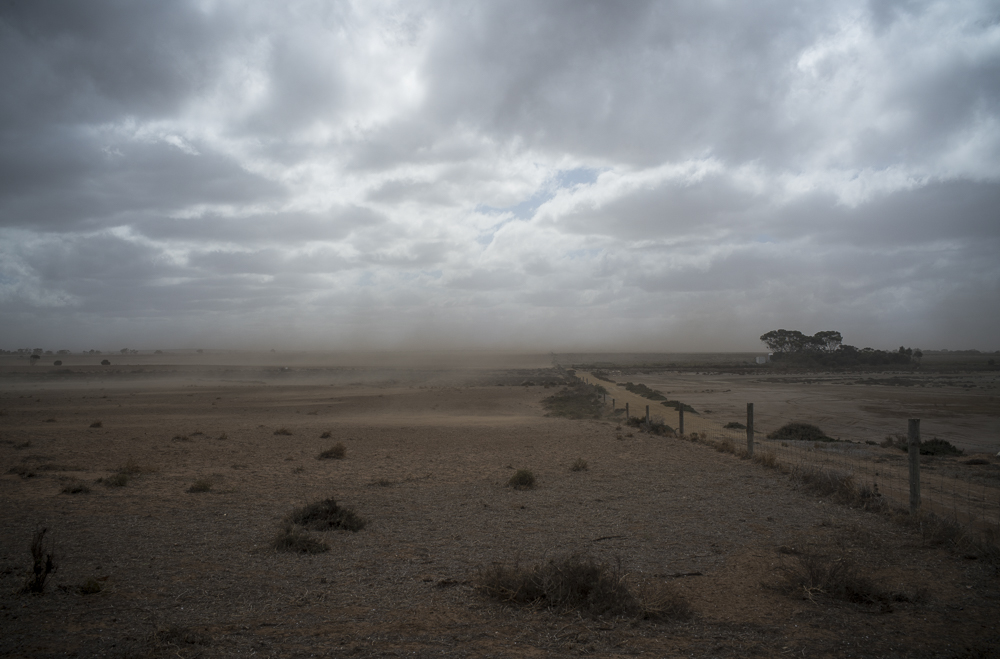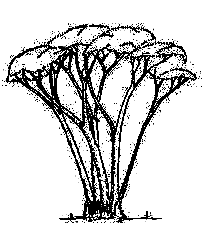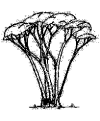The photography in the forthcoming Mallee Routes exhibition in late 2019 will now be spread across the Murray Bridge Regional Gallery’s three galleries, namely, the small Jean Symonds Gallery, the large Main Gallery and the small Sculpture Court gallery. These three galleries are linked and this gives the exhibition a unity. The overall exhibition is organised in terms of past (in the Jean Symonds Gallery), present (in the Main Gallery) and future (in the Sculpture Court gallery.) So the 2019 exhibition will be more conceptual orientated than the 2018 exhibition at the Swan Hill Regional Art Gallery.
The photography in the Sculpture Court emerges from an exploratory nomadic roaming about, and it will be more experimental in content and presentation than the photography in the other two galleries. It will explore themes such as climate change, water, C roads and salt. These themes are part of the specific and complex historical quality of our present, its contemporaneity. It is experimental in that the photography is no longer subservient to the debilitating effects of cliches about the Mallee or drought; it is one that endeavours to adapt the critical potential of the arts to both the new global /digital situation today and the problems that those in the Mallee will face. Since the work is a looking towards unknown futures, the photography necessarily crosses the bounds of common sense to make relations and connections within possibilities not already given in the present. The question that is posed is: how can photography explore this futurity in relation to the Mallee?
The theme that I will personally start to explore is the future effects of climate change in the Mallee based on the CSIRO’s State of the Climate 2018 report, which is the latest biennial snapshot of climate change in Australia. This report says that climate change superimposed on natural variability will continue in the decades ahead. Australia, as a result, will experience more hot days with decreases in rainfall across southern Australia with more time in drought. Water is going to become even more critical so will the health of the Murray-Darling Basin’s rivers and the sustainability of the land. It will be difficult to move beyond the cliches of photojournalism and the myths of Australian history.

The photographic explorations of the different themes can be understood as an experimental crossing of borders to explore the ‘same’ conflictual reality and unknown futures in diverse ways. This involves new ways of thinking, seeing, talking, as these arise from the particular circumstances of the contemporary, which contracts the future into the present: the contemporary is a disavowal of the futurity of the present. This photography about the Mallee’s unknown futures is based on the artist as experimenter or cartographer, working in the zones of the contemporary world where processes may go off in unforeseen directions or function in unregulated and different ways.
The curatorial problem with respect to this exploratory photography in the Sculpture Court gallery is: how can we conceptualize these diverse, experimental approaches so they cohere in a loose fashion, given that the exhibition is the unit of artistic significance or the object of constructive intent? The solution is the idea of unknown futures.
Gilles Deleuze and Félix Guattari’s 1991 text What Is Philosophy? is helpful in this context of mapping ways to photograph unknown futures. The text, which describes three basic modes of thought, provides some conceptual background. Philosophy, Deleuze and Guattari say, is the creation of new concepts on the plane of immanence; science is about functions that map observed regularities; and art is a bloc or composite of (prelinguistic and pre-subjective) sensations, composed of percepts, affects and images on the plane of composition. Art works, they add, free affect from personal feeling and percept from common perception of the object. Art works to extract sensations from habits of feeling, perception, memory, recognition and agreement to help cause us to see and feel in new or unforseen ways.

Art works preserve sensations–they extract them and construct them in new constructions. In deterritorializing sensation the artist separates sensation from its actual context; the sensation is then open to deployment within multiple possible worlds, and in its decontextualisation it is revealed as a being off sensation, an entity whose mode of existence is that of the possible. Art is not about communication or recognition, it is about “the emergence of something new and singular, which precedes us and requires us to ‘invent’ ourselves as another people”.
Deleuze and Guattari link both philosophy and art to the possibilities of life in the sense of enabling something new to be thought or felt. If philosophy and the arts share a common goal of creating possibilities of life in the sense of new modes of existence, then in this commonality a non-philosophical understanding of philosophy’ in and through the arts emerges. This can be called a re-aestheticization of thinking’, or the reinvention of thinking in the arts. This avoids the two extremes of a ‘didactic’ relation, where art just illustrates a given theory, and a ‘romantic’ one, where art is the preserve of an element that can’t be thought about at all. Philosophy and art resonate. If philosophy formulates new problems and suggests new concepts, and helps to destabilize cliches and ready-made ideas, then art shows philosophy the way out of its dogmatic image of thought under which it has traditionally laboured. This is a background rationale for the exploratory photography about unknown futures in the Sculpture Court.
I will begin my exploratory photography re the unknown futures of climate change at the next Mallee Routes photocamp, which is in late April in the Lake Victoria/Wentworth region of south-western NSW.


[…] want to explore the lower Darling River for my climate change contribution to the unknown futures section of the upcoming 2019 exhibition at the Murray Bridge Regional […]